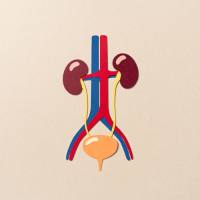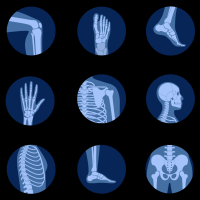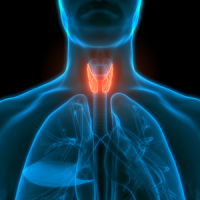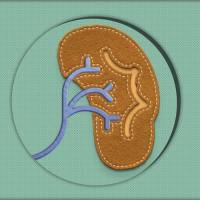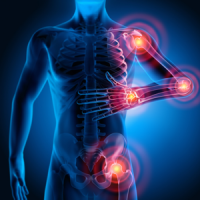Circulation 2008年1月22日
Abstract 1 of 10 (Circulation. 2008;117:344-355.)
Arrhythmia/Electrophysiology
Angiotensin II Activates Signal Transducer and Activators of Transcription 3 via Rac1 in Atrial Myocytes and Fibroblasts
Implication for the Therapeutic Effect of Statin in Atrial Structural Remodeling
Background— Recently, activation of the local renin-angiotensin system and mitogen-activated protein kinase pathways in atrial myocardium has been found to play an important role in atrial structural remodeling related to atrial fibrillation. Another important mediator of the angiotensin II (Ang II) effect is the Janus kinase/signal transducers and activators of transcription (STAT) pathway, which has never been characterized in the atrium.
Methods and Results— In cultured atrial myocytes and fibroblasts, Ang II induced tyrosine phosphorylation of STAT3 through a Rac1-dependent mechanism, which was inhibited by dominant-negative Rac1, losartan, and simvastatin. In atrial myocytes, activation of STAT3 by Rac1 was mediated by direct association of Rac1 with STAT3; however, in atrial fibroblasts, it was mediated by an indirect paracrine effect. Constitutively active STAT3 increased protein synthesis, and dominant-negative STAT3 abrogated Ang II–induced protein synthesis in atrial myocytes and fibroblasts. Rats infused long term with Ang II exhibited higher levels of activated Rac1, phospho-STAT3, collagen synthesis, and atrial fibrosis in the atria, all of which were attenuated by oral losartan and simvastatin. In human atrial tissues from patients with atrial fibrillation, Ang II and phospho-STAT3 levels were also elevated.
Conclusions— The Ang II/Rac1/STAT3 pathway is an important signaling pathway in the atrial myocardium to mediate atrial structural remodeling, and losartan and statin may be able to reverse Ang II–induced atrial structural remodeling in atrial fibrillation.
Abstract 2 of 10 (Circulation. 2008;117:356-362.)
Cardiovascular Surgery
Mayo Clinic Risk Score for Percutaneous Coronary Intervention Predicts In-Hospital Mortality in Patients Undergoing Coronary Artery Bypass Graft Surgery
Background— Current risk models predict in-hospital mortality after either coronary artery bypass graft surgery or percutaneous coronary interventions separately, yet the overlap suggests that the same variables can define the risks of alternative coronary reperfusion therapies. Our goal was to seek a preprocedure risk model that can predict in-hospital mortality after either percutaneous coronary intervention or coronary artery bypass graft surgery.
Methods and Results— We tested the ability of the recently validated, integer-based Mayo Clinic Risk Score (MCRS) for percutaneous coronary intervention, which is based solely on preprocedure variables (age, creatinine, ejection fraction, myocardial infarction 24 hours, shock, congestive heart failure, and peripheral vascular disease), to predict in-hospital mortality among 370 793 patients in the Society of Thoracic Surgeons database undergoing isolated coronary artery bypass graft surgery from 2004 to 2006. For the Society of Thoracic Surgeons coronary artery bypass graft surgery population studied, the median age was 66 years (quartiles 1 to 3, 57 to 74 years), with 37.2% of patients 70 years old. A high prevalence of comorbid conditions, including diabetes mellitus (37.1%), hypertension (80.5%), peripheral vascular disease (15.3%), and renal disease (creatinine 1.4 mg/dL; 11.8%), was present. A strong association existed between the MCRS and the observed mortality in the Society of Thoracic Surgeons database. The in-hospital mortality ranged between 0.3% (95% confidence interval 0.3% to 0.4%) with a score of 0 on the MCRS and 33.8% (95% confidence interval 27.3% to 40.3%) with an MCRS score of 20 to 24. The discriminatory ability of the MCRS was moderate, as measured by the area under the receiver operating characteristic curve (C-statistic=0.715 to 0.784 among various subgroups); performance was inferior to the Society of Thoracic Surgeons model for most categories tested.
Conclusions— This model, which is based on 7 preprocedure risk variables, may be useful for providing patients with individualized, evidence-based estimates of procedural risk as part of the informed consent process before percutaneous or surgical revascularization.
Abstract 3 of 10 (Circulation. 2008;117:363-370.)
Congenital Heart Disease
Implantable Cardioverter-Defibrillators in Tetralogy of Fallot
Background— Tetralogy of Fallot is the most common form of congenital heart disease in implantable cardioverter-defibrillator (ICD) recipients, yet little is known about the value of ICDs in this patient population.
Methods and Results— We conducted a multicenter cohort study in high-risk patients with Tetralogy of Fallot to determine actuarial rates of ICD discharges, identify risk factors, and characterize ICD-related complications. A total of 121 patients (median age 33.3 years; 59.5% male) were enrolled from 11 sites and followed up for a median of 3.7 years. ICDs were implanted for primary prevention in 68 patients (56.2%) and for secondary prevention in 53 (43.8%), defined by clinical sustained ventricular tachyarrhythmia or resuscitated sudden death. Overall, 37 patients (30.6%) received at least 1 appropriate and effective ICD discharge, with a median ventricular tachyarrhythmia rate of 213 bpm. Annual actuarial rates of appropriate ICD shocks were 7.7% and 9.8% in primary and secondary prevention, respectively (P=0.11). A higher left ventricular end-diastolic pressure (hazard ratio 1.3 per mm Hg, P=0.004) and nonsustained ventricular tachycardia (hazard ratio 3.7, P=0.023) independently predicted appropriate ICD shocks in primary prevention. Inappropriate shocks occurred in 5.8% of patients yearly. Additionally, 36 patients (29.8%) experienced complications, of which 6 (5.0%) were acute, 25 (20.7%) were late lead-related, and 7 (5.8%) were late generator-related complications. Nine patients died during follow-up, which corresponds to an actuarial annual mortality rate of 2.2%, which did not differ between the primary and secondary prevention groups.
Conclusions— Patients with tetralogy of Fallot and ICDs for primary and secondary prevention experience high rates of appropriate and effective shocks; however, inappropriate shocks and late lead-related complications are common.
Abstract 4 of 10 (Circulation. 2008;117:371-378.)
Health Services and Outcomes Research
Electronic Alerts Versus On-Demand Decision Support to Improve Dyslipidemia Treatment
A Cluster Randomized Controlled Trial
Background— Indirect evidence shows that alerting users with clinical decision support systems seems to change behavior more than requiring users to actively initiate the system. However, randomized trials comparing these methods in a clinical setting are lacking. We studied the effect of both alerting and on-demand decision support with respect to screening and treatment of dyslipidemia based on the guidelines of the Dutch College of General Practitioners.
Methods and Results— In a clustered randomized trial design, 38 Dutch general practices (77 physicians) and 87 886 of their patients (39 433 men 18 to 70 years of age and 48 453 women 18 to 75 years of age) who used the ELIAS electronic health record participated. Each practice was assigned to receive alerts, on-demand support, or no intervention. We measured the percentage of patients screened and treated after 12 months of follow-up. In the alerting group, 65% of the patients requiring screening were screened (relative risk versus control=1.76; 95% confidence interval, 1.41 to 2.20) compared with 35% of patients in the on-demand group (relative risk versus control=1.28; 95% confidence interval, 0.98 to 1.68) and 25% of patients in the control group. In the alerting group, 66% of patients requiring treatment were treated (relative risk versus control=1.40; 95% confidence interval, 1.15 to 1.70) compared with 40% of patients (relative risk versus control=1.19; 95% confidence interval, 0.94 to 1.50) in the on-demand group and 36% of patients in the control group.
Conclusion— The alerting version of the clinical decision support systems significantly improved screening and treatment performance for dyslipidemia by general practitioners.
Abstract 5 of 10 (Circulation. 2008;117:379-387.)
Imaging
Nanoparticle PET-CT Imaging of Macrophages in Inflammatory Atherosclerosis
Background— Macrophages participate centrally in atherosclerosis, and macrophage markers (eg, CD68, MAC-3) correlate well with lesion severity and therapeutic modulation. On the basis of the avidity of lesional macrophages for polysaccharide-containing supramolecular structures such as nanoparticles, we have developed a new positron emission tomography (PET) agent with optimized pharmacokinetics to allow in vivo imaging at tracer concentrations.
Methods and Results— A dextranated and DTPA-modified magnetofluorescent 20-nm nanoparticle was labeled with the PET tracer 64Cu (1 mCi/0.1 mg nanoparticles) to yield a PET, magnetic resonance, and optically detectable imaging agent. Peak PET activity 24 hours after intravenous injection into mice deficient in apolipoprotein E with experimental atherosclerosis mapped to areas of high plaque load identified by computed tomography such as the aortic root and arch and correlated with magnetic resonance and optical imaging. Accumulated dose in apolipoprotein E–deficient aortas determined by gamma counting was 260% and in carotids 392% of respective wild-type organs (P<0.05 both). Autoradiography of aortas demonstrated uptake of the agent into macrophage-rich atheromata identified by Oil Red O staining of lipid deposits. The novel nanoagent accumulated predominantly in macrophages as determined by fluorescence microscopy and flow cytometry of cells dissociated from aortas.
Conclusions— This report establishes the capability of a novel trimodality nanoparticle to directly detect macrophages in atherosclerotic plaques. Advantages include improved sensitivity; direct correlation of PET signal with an established biomarker (CD68); ability to readily quantify the PET signal, perform whole-body vascular surveys, and spatially localize and follow the trireporter by microscopy; and clinical translatability of the agent given similarities to magnetic resonance imaging probes in clinical trials.
Abstract 6 of 10 (Circulation. 2008;117:388-395.)
Imaging
Noninvasive In Vivo Imaging of Monocyte Trafficking to Atherosclerotic Lesions
Background— Monocytes play a key role in atherogenesis, but their participation has been discerned largely via ex vivo analyses of atherosclerotic lesions. We sought to establish a noninvasive technique to determine monocyte trafficking to atherosclerotic lesions in live animals.
Methods and Results— Using a micro–single-photon emission computed tomography small-animal imaging system and a Food and Drug Administration–approved radiotracer ([indium 111] oxyquinoline, 111In-oxine), we demonstrate here that monocyte recruitment to atherosclerotic lesions can be visualized in a noninvasive, dynamic, and 3-dimensional fashion in live animals. We show in vivo that monocytes are recruited avidly to plaques within days of adoptive transfer. Using micro–single-photon emission computed tomography imaging as a screening tool, we were able to investigate modulatory effects on monocyte recruitment in live animals. We found that 3-hydroxy-3-methylglutaryl coenzyme A reductase inhibitors rapidly and substantially reduce monocyte recruitment to existing atherosclerotic lesions, as imaged here in vivo.
Conclusions— This novel approach to track monocytes to atherosclerotic plaques in vivo should have broad applications and create new insights into the pathogenesis of atherosclerosis and other inflammatory diseases.
Abstract 7 of 10 (Circulation. 2008;117:396-404.)
Molecular Cardiology
Nix-Mediated Apoptosis Links Myocardial Fibrosis, Cardiac Remodeling, and Hypertrophy Decompensation
Background— Pathological cardiac hypertrophy inevitably remodels, leading to functional decompensation. Although modulation of apoptosis-regulating genes occurs in cardiac hypertrophy, a causal role for programmed cardiomyocyte death in left ventricular (LV) remodeling has not been established.
Methods and Results— We targeted the gene for proapoptotic Nix, which is transcriptionally upregulated in pressure overload and Gq-dependent hypertrophies, in the mouse germ line or specifically in cardiomyocytes (knockout [KO]) and conditionally overexpressed it in the heart (transgenic [TG]). Conditional forced Nix expression acted synergistically with the prohypertrophic Gq transgene to increase cardiomyocyte apoptosis (0.8±0.1% in GqTG versus 7.8±0.6% in GqTG+NixTG; P<0.001), causing lethal cardiomyopathy with LV dilation and depressed systolic function (percent fractional shortening, 39±4 versus 23±4; P=0.042). In the reciprocal experiment, germ-line Nix ablation significantly reduced cardiomyocyte apoptosis (4.8±0.2% in GqTG+NixKO versus 8.4±0.5% in GqTG; P=0.001), which improved percent fractional shortening (43±3% versus 27±3%; P=0.017), attenuated LV remodeling, and largely prevented lethality in the Gq peripartum model of apoptotic cardiomyopathy. Cardiac-specific (Nkx2.5-Cre) Nix KO mice subjected to transverse aortic constriction developed significantly less LV dilation by echocardiography and magnetic resonance imaging, maintained concentric remodeling, and exhibited preserved LV ejection fraction (61±2% in transverse aortic constriction cardiac Nix KO versus 36±6% in transverse aortic constriction wild-type mice; P=0.003) at 9 weeks, with reduced cardiomyocyte apoptosis at day 4 (1.70±0.21% versus 2.73±0.35%; P=0.032).
Conclusions— Nix-induced cardiomyocyte apoptosis is a major determinant of adverse remodeling in pathological hypertrophies, a finding that suggests therapeutic value for apoptosis inhibition to prevent cardiomyopathic decompensation.
Abstract 8 of 10 (Circulation. 2008;117:405-410.)
Pediatric Cardiology
Perinatal Risk Factors for Ischemic Heart Disease
Disentangling the Roles of Birth Weight and Preterm Birth
Background— Several studies have reported an association between low birth weight and ischemic heart disease, but it remains unclear whether the association is mediated through poor fetal growth or short gestational duration.
Methods and Results— In a cohort study, we have identified all subjects born preterm or with a low birth weight at 4 major delivery units in Sweden from 1925 through 1949. For comparison, an equal number of subjects with none of these criteria were identified within the same source population. The study population consists of 6425 subjects, of whom 2931 were born before 37 weeks of gestation and 2176 had a birth weight <2500 g. Fetal growth was estimated through birth weight for gestational age. The cohort was followed up for occurrence of ischemic heart disease through the nationwide Hospital Discharge and Cause of Death Registries during the period of 1987 through 2002. In the cohort, 617 cases of ischemic heart disease occurred. Compared with subjects with a normal fetal growth, those born small for gestational age (birth weight –2 SD below the mean) were at increased risk of ischemic heart disease (adjusted hazard ratio, 1.64; 95% confidence interval, 1.23 to 2.18). The negative association between fetal growth and risk of ischemic heart disease was independent of gestational duration.
Conclusions— The association between low birth weight and adult risk of ischemic heart disease appears to be mediated entirely by poor fetal growth.
Abstract 9 of 10 (Circulation. 2008;117:411-420.)
Vascular Medicine
Osteoprotegerin Inhibits Vascular Calcification Without Affecting Atherosclerosis in ldlr(–/–) Mice
Background— The role of osteoprotegerin in vascular disease is unclear. Recent observational studies show that serum osteoprotegerin levels are associated with the severity and progression of coronary artery disease, atherosclerosis, and vascular calcification in patients. However, genetic and treatment studies in mice suggest that osteoprotegerin may protect against vascular calcification.
Methods and Results— To test whether osteoprotegerin induces or prevents vascular disease, we treated atherogenic diet–fed ldlr(–/–) mice with recombinant osteoprotegerin (Fc-OPG) or vehicle for 5 months. Vehicle-treated mice developed significant, progressive atherosclerosis with increased plasma osteoprotegerin levels, consistent with observational studies, and 15% of these atherosclerotic lesions developed calcified cartilage-like metaplasia. Treatment with Fc-OPG significantly reduced the calcified lesion area without affecting atherosclerotic lesion size or number, vascular cytokines, or plasma cholesterol levels. Treatment also significantly reduced tissue levels of aortic osteocalcin, a marker of mineralization.
Conclusions— These data support a role for osteoprotegerin in the vasculature as an inhibitor of calcification and a marker, rather than a mediator, of atherosclerosis.
Abstract 10 of 10 (Circulation. 2008;117:421-428.)
Vascular Medicine
Dietary -Lipoic Acid Supplementation Inhibits Atherosclerotic Lesion Development in Apolipoprotein E–Deficient and Apolipoprotein E/Low-Density Lipoprotein Receptor–Deficient Mice
Background— Vascular inflammation and lipid deposition are prominent features of atherosclerotic lesion formation. We have shown previously that the dithiol compound -lipoic acid (LA) exerts antiinflammatory effects by inhibiting tumor necrosis factor-– and lipopolysaccharide-induced endothelial and monocyte activation in vitro and lipopolysaccharide-induced acute inflammatory responses in vivo. Here, we investigated whether LA inhibits atherosclerosis in apolipoprotein E–deficient (apoE–/–) and apoE/low-density lipoprotein receptor–deficient mice, 2 well-established animal models of human atherosclerosis.
Methods and Results— Four-week–old female apoE–/– mice (n=20 per group) or apoE/low-density lipoprotein receptor–deficient mice (n=21 per group) were fed for 10 weeks a Western-type chow diet containing 15% fat and 0.125% cholesterol without or with 0.2% (wt/wt) R,S-LA or a normal chow diet containing 4% fat without or with 0.2% (wt/wt) R-LA, respectively. Supplementation with LA significantly reduced atherosclerotic lesion formation in the aortic sinus of both mouse models by 20% and in the aortic arch and thoracic aorta of apoE–/– and apoE/low-density lipoprotein receptor–deficient mice by 55% and 40%, respectively. This strong antiatherogenic effect of LA was associated with almost 40% less body weight gain and lower serum and very low-density lipoprotein levels of triglycerides but not cholesterol. In addition, LA supplementation reduced aortic expression of adhesion molecules and proinflammatory cytokines and aortic macrophage accumulation. These antiinflammatory effects of LA were more pronounced in the aortic arch and the thoracic aorta than in the aortic sinus, reflecting the corresponding reductions in atherosclerosis.
Conclusions— Our study shows that dietary LA supplementation inhibits atherosclerotic lesion formation in 2 mouse models of human atherosclerosis, an inhibition that appears to be due to the "antiobesity," antihypertriglyceridemic, and antiinflammatory effects of LA. LA may be a useful adjunct in the prevention and treatment of atherosclerotic vascular diseases.







